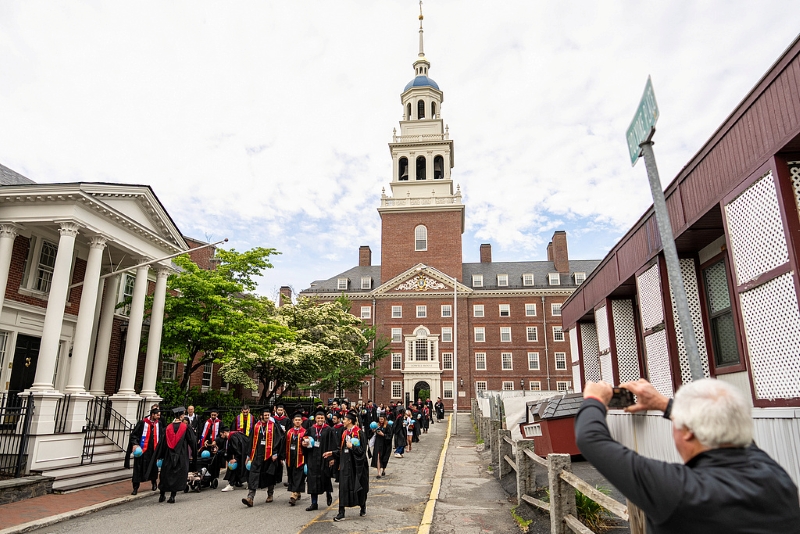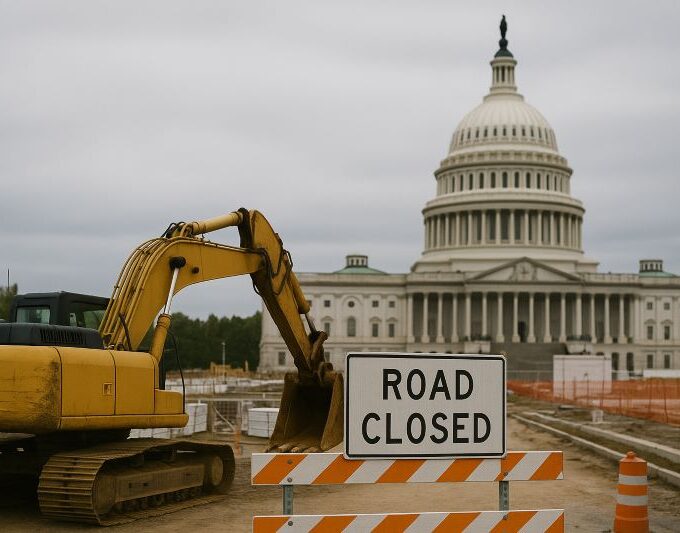As American higher education has risen to global prominence, universities have been seen as a key pillar of the country’s soft power—drawing in top international talent and generating substantial economic gains, thereby expanding U.S. global influence. “I believe the greatest asset America has is the goodwill of future world leaders who studied here,” former Secretary of State Colin Powell said in 2001.
At the same time, the overwhelming dominance of elite U.S. universities has deepened the divide between cultural elites and working-class Americans. To win over grassroots voters, the U.S. government has increasingly found itself at odds with universities—both in terms of interests and values. Latest.com takes a closer look at how tensions between America’s academic institutions and the government have steadily built up—and how they may finally be reaching a breaking point.
“One of the Most Powerful Tools of Diplomacy and Soft Power”
Since the 19th century, international students have been coming to the United States for higher education. Research shows that the earliest international students in the U.S. came from China and Japan. According to the earliest data from the Institute of International Education (IIE), over 25,000 international students were enrolled in U.S. universities during the 1948–1949 academic year—about 1% of the total higher education population at the time. After 2006, the number of international students in the U.S. surged. In the 2023–2024 academic year, international enrollment reached 1.1 million, with the largest numbers coming from India (approx. 331,000), China (approx. 277,000), South Korea (approx. 43,000), and Canada (approx. 29,000).
The rise in international students has brought substantial economic benefits to the United States. “Students don’t just pay tuition—they pay rent, eat at restaurants, and travel,” said Nicholas Barr, a professor at the London School of Economics, in an interview with The Washington Post. According to NAFSA: Association of International Educators, international students contributed nearly $44 billion to the U.S. economy in the 2023–2024 academic year. States with a high concentration of universities benefited the most—nearly 90,000 international students in Texas generated $2.5 billion; 82,000 in Massachusetts contributed about $3.9 billion; and California, with the largest international student population of roughly 141,000, gained about $6.4 billion.
“International students contribute to our economy, support American jobs, and are one of the most powerful tools of our diplomacy and soft power,” said U.S. Senator Jeanne Shaheen, a Democrat. Georgetown University echoed this view in a campus publication, stating that higher education—especially for international students—is the most vital asset in America’s soft power arsenal. The article argued that when international students immerse themselves in U.S. culture, their perspectives inevitably shift, at least in part. Upon returning home to hold influential roles in public or private sectors, they may shape their nation’s development and even its foreign policy toward the U.S.
In an interview with Global Times, Professor Li Haidong of China Foreign Affairs University noted that the influx of international students to the U.S. has helped build the country’s reputation as open, inclusive, and welcoming to students from diverse civilizations and development stages. This openness, and the innovation and progress sparked by global talent, has significantly boosted American soft power. Many international students who visit or graduate in the U.S. and choose to stay also become a driving force behind America’s continued growth.
From “Lineage Filtering” to “IQ Filtering”
As American higher education evolved, “elite education” became synonymous with a handful of top-tier institutions like the Ivy League. These prestigious universities command massive resources—from faculty and research facilities to academic prestige and social influence. However, public resentment toward this dominance has steadily grown. According to a Gallup poll released in November 2023, only 36% of Americans expressed confidence in their country’s higher education system—down sharply from 57% in 2015.
Soaring student debt is one of the key reasons Americans are losing faith in higher education. One major shift in the late 20th century was the rapid rise of for-profit colleges. Initially, these schools attracted low-income students who relied on federal loans to pay tuition. But many failed to graduate or secure stable employment afterward, leaving them unable to repay their debts. By the 21st century, for-profit colleges had become highly controversial. The Chronicle of Higher Education wrote in 2014 that public higher education—once seen as a collective good—was increasingly viewed as a private benefit, and more Americans were unwilling to bear the cost. The piece concluded: “American higher education is at a tipping point.” Several for-profit institutions were eventually shut down by federal and state authorities for exploiting vulnerable populations, yet the student debt crisis remains widespread in the U.S.
“Why have American universities become such easy targets?” The New York Times posed this question in a March 2024 article. Opinion columnist Bret Stephens pointed to a defining moment in 2015: Yale University’s Intercultural Affairs Committee issued a notice urging students to avoid culturally insensitive costumes at Halloween parties. In response, Associate Master Erika Christakis argued that the university shouldn’t police student expression in the name of protecting minority feelings. The backlash sparked protests involving over a thousand students. Stephens remarked, “It was a moment when two core values of the modern university—diversity and free speech—collided in the worst possible way.”
Another New York Times opinion columnist, Ross Douthat, argued that beyond value conflicts, elite backlash itself is becoming a mainstream phenomenon in America. The issue, he wrote, isn’t elite institutions per se, but the growing gap between elite circles—both on and off campus—and ordinary citizens. While universities aren’t solely to blame, he noted, they undeniably play a role in creating and sustaining these social and economic divides.
In November of last year, The Atlantic published an article titled “How the Ivy League Broke America”, arguing that the U.S. elite education system has shifted from “lineage-based selection” to “IQ-based selection,” but has failed to deliver social equity. Instead, it has entrenched class segregation in more subtle ways. In the early 20th century, elite schools like Harvard prioritized “social factors” in admissions—such as appearance, athletic ability, refined manners, Episcopal Church affiliation, and white ancestry. Children of alumni were also given preferential treatment.
James Conant, who served as Harvard president from 1933 to 1953, sought to overhaul this system by emphasizing “intellect” as the central admissions criterion. He hoped to identify talent through academic achievement and build a more mobile, less class-conflicted society. However, these reforms were still constrained by donor interests. As late as 1951, Harvard was still admitting 94% of alumni children. The article argues that in the long run, the IQ-based model simply turned universities into incubators for “cognitive elites,” intensifying reliance on elite degrees in the job market and reinforcing a closed loop of “top schools → top jobs.” Those who manage to squeeze into these elite institutions often go on to lead across sectors.
“Admissions data from elite universities show that extreme wealth is practically a credential,” The New York Times reported in 2023. At Ivy League schools, about one in six students comes from families in the top 1% of national income. A research team based at Harvard, Opportunity Insights, found that among applicants with similar academic records, those from the top 1% income bracket were 34% more likely to be admitted than average applicants—and those from the top 0.1% were more than twice as likely to get in.
The Atlantic argued that the entrenchment of elite rule has fueled public resentment toward the system and deepened societal divides in the U.S. Educational background has become a central fault line in American politics—highly educated and less-educated citizens work different jobs, live in different neighborhoods, and hold different values and political leanings.
“Deep Class Conflict and a Crisis of Financial Dependence”
In 2021, J.D. Vance, then a U.S. Senate candidate from Ohio, gave a speech at the National Conservatism Conference titled “The Universities Are the Enemy.” He condemned American universities as “hostile institutions,” declaring that if conservatives “want to do something for our country and the people who live in it, we must unapologetically take on the task of overhauling America’s universities.” According to The Guardian, the title of Vance’s speech was inspired by a famous line from former Republican President Richard Nixon: “The professors are the enemy.”

J.D. Vance is seen as a representative voice of America’s “Rust Belt”—a region that once served as the backbone of U.S. manufacturing. With the decline of industry and structural shifts in the economy, jobs disappeared en masse, communities fell into hardship, and personal advancement became increasingly difficult. In his memoir Hillbilly Elegy, Vance vividly describes the struggles and confusion faced by the people in this region. A Foreign Policy book review noted that although Vance graduated with honors from Ohio State University, he was completely “lost in a foreign culture” when he arrived at Yale. The people there spoke differently, acted differently, and exuded a confidence untouched by the trauma of working-class life. While working-class students had to fill out complex forms just to prove they belonged, wealthy students leveraged their parents’ networks to get into top schools and land prestigious jobs—a direct path to the heights of business and politics.
Some Americans have criticized Vance’s stance, saying, “He benefited from education himself, but doesn’t want others to do the same.” The Atlantic argued that wherever wealth and power concentrate around highly educated elites, populist leaders tend to rise. These leaders understand that working-class Americans often resent “elite arrogance” far more than they resent real estate moguls or wealthy CEOs. They tap into this anti-elite sentiment and turn politics into a war of values.
Professor Li Haidong told Global Times that U.S. universities and the federal government have long-standing conflicts of interest and ideology. For example, universities uphold openness to attract a broad student base and maintain economic sustainability. But in the current U.S. political climate—dominated by anti-immigration and anti-diversity rhetoric—that openness is under pressure.
Following the September 11 attacks in 2001, the U.S. government tightened entry and surveillance policies across the board. The newly created Department of Homeland Security launched the Student and Exchange Visitor Information System (SEVIS), managed by Immigration and Customs Enforcement (ICE). Every international student and scholar entering the U.S. receives a SEVIS ID and must report any change in address, major, degree level, or off-campus employment to the government.
During Trump’s first term, restrictions on international students intensified. According to The Washington Post and other outlets, in 2017 Trump signed several executive orders targeting students from Muslim-majority countries, triggering a travel ban that forced many Middle Eastern students to abandon their studies. A student mentioned by a Global Times contributor was forced to return to Iran before completing his degree—and never returned. That same year, the Trump administration passed a tax reform bill imposing a 1.4% excise tax (increasing to 21% in 2025) on investment returns from university endowments exceeding $500,000 per student.
In July 2020, the U.S. government announced that international students enrolled only in online courses would no longer be allowed to stay in the country. The policy was met with swift backlash—COVID-19 had forced most schools to suspend in-person classes. Harvard, MIT, and the attorneys general of multiple states and Washington, D.C., sued the federal government, which ultimately rescinded the rule.
India’s The Wire commented that the deeper divide between government and universities stems from a combination of class conflict and financial dependency. While the U.S. government claims to be “ending elite privilege,” it often exploits public frustration with tuition costs to paint universities as “fortresses of liberal privilege.” Meanwhile, the left criticizes universities for corporatization (e.g., overpaid administrators and entrenched alumni networks), while the right attacks them for being infiltrated by “woke ideology.” Together, these forces have fueled a growing public crisis of confidence in higher education.













Leave a comment